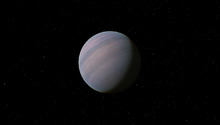
Upping the ante from “Saturn’s moon Titan’s ocean could be like Dead Sea” (so the best we could hope for is salty fossils), get a load of what happened to the Gliese 581d craze.
From New Scientist:
Type the name “Gliese 581 d” into a search engine, and you’ll find hundreds of tantalising images of an Earth-like world. The exoplanet has been a top contender for the most life-friendly world beyond our solar system since it was discovered in 2007. There’s just one problem – it probably doesn’t exist.
New analysis of the Gliese 581 star system suggests that signals previously attributed to two of its six suspected planets actually come from sunspot-like regions on the star itself. The same analysis builds support that three of the other four planets are real, but none of these worlds would be able to support life as we know it.
The writer asks,
So should astronomers – and the media, New Scientist included – be more cautious next time they trumpet an exoplanet haul?
On that, there is a division of opinion, it turns out. One side believes that the taxpayer wants and needs to believe in this stuff.
If so, New Scientist is sure helping the taxpayer get his money’s worth.
See The Science Fictions series at your fingertips (cosmology) for why it isn’t possible to evaluate the claims for alien life rationally any more.
Follow UD News at Twitter!
If rhetoric and filmography could create a planet, Gliese 481d would surely exist: